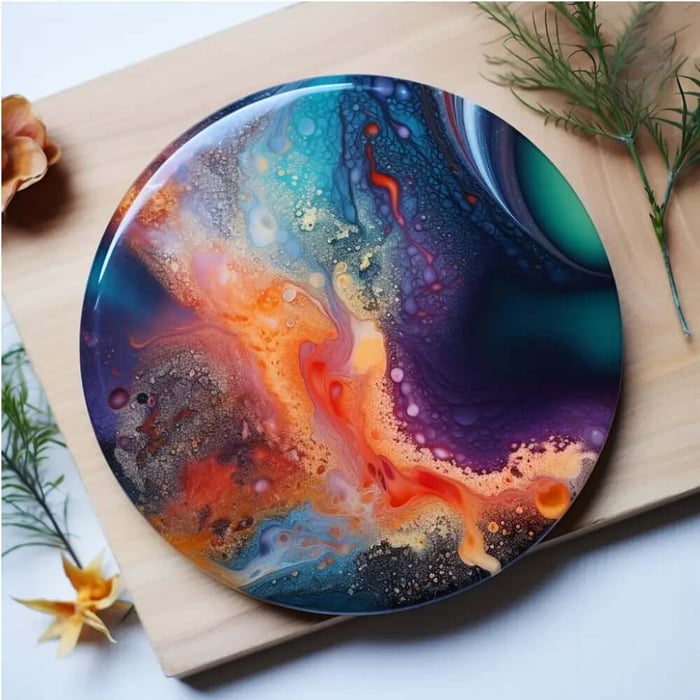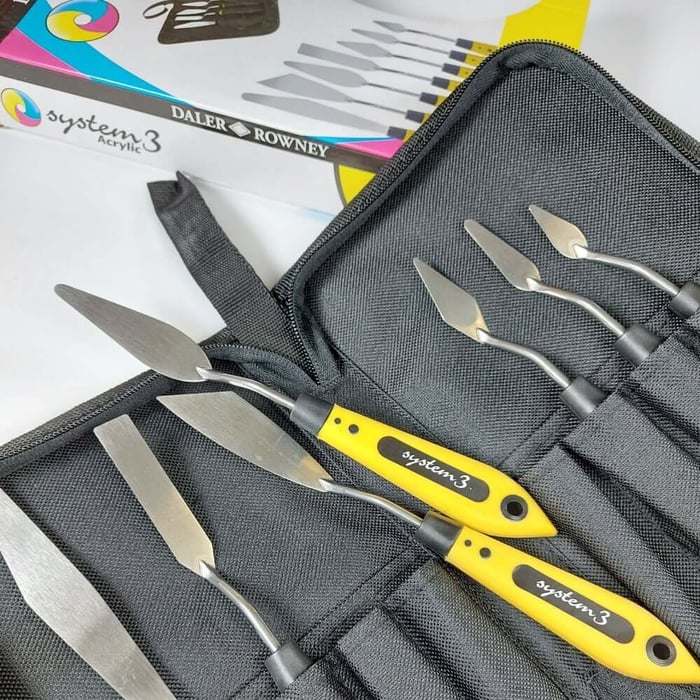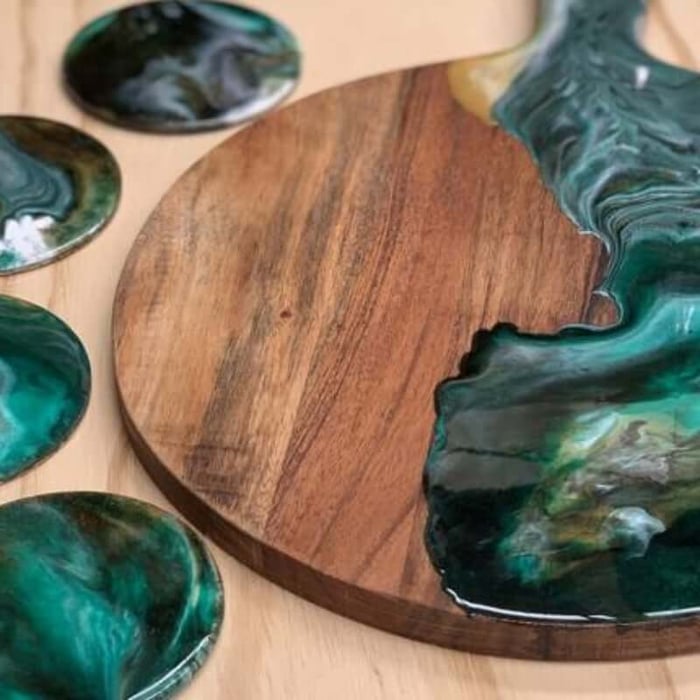Watercolour Brushes for Beginners: Complete Guide to Shapes, Bristles & Buying Tips
If you're just getting started with watercolour painting, you’ve likely already discovered that the right brush can make a big difference in your results. But with so many brush shapes, sizes, and types of bristles available, knowing which brushes to choose can be overwhelming.
In this guide, we’ll walk you through everything you need to know about watercolour brushes—from the essential shapes and materials to brush anatomy and pro tips—so you can build your perfect starter kit and start painting with confidence.
🖌️ Paintbrush Shapes: What Every Watercolour Beginner Should Know
Watercolour brushes come in a wide variety of shapes, and each is suited to different techniques and effects. Whether you're creating fine details or broad washes, selecting the right brush shape is the first step to mastering watercolour painting.
✅ Round Brush – The All-Rounder
This is the most versatile and commonly used brush in watercolour painting. It comes to a fine point, making it perfect for controlled lines, detail work, and small washes. Ideal for beginners, a round brush can handle most basic techniques.
Best for: Line work, washes, controlled strokes, detail.
✅ Flat Brush – The Sharp Contender
A flat brush has a square, straight edge and can be used for making bold, consistent strokes. It’s great for painting sharp edges and filling in blocks of colour.
Best for: Edges, stripes, filling large areas, lifting paint.
✅ Wash Brush – Broad and Absorbent
A larger version of the flat brush, the wash brush holds a lot of water and paint. It’s designed to cover wide areas quickly with consistent pigment and is essential for background washes.
Best for: Wet-on-wet washes, gradients, laying down background colour.
✅ Mop Brush (or Quill) – For Smooth Blending
These soft, rounded brushes hold large amounts of water and pigment, making them ideal for laying down broad washes with a smooth, even finish. Mop brushes are made with long hair and a rounded shape that creates flowing, expressive strokes.
Best for: Loose washes, blending, soft backgrounds.
🔍 Intermediate & Specialty Watercolour Brush Shapes
As you gain experience, you might want to explore other specialty brushes that allow for more precise or textured effects.
➕ Oval Brush (Filbert)
A combination of flat and round, this brush has a flat body and a rounded tip, offering a unique stroke ideal for glazing and soft blending.
➕ Fan Brush
This brush has spread-out bristles in the shape of a fan. It's ideal for blending and creating texture in foliage, hair, or clouds.
➕ Dagger Brush
Also called a sword liner, this brush has slanted bristles and is perfect for creating long, sweeping lines or sharp angles.
➕ Script Liner Brush
Designed for very fine, detailed work, script liners have long bristles that hold a good amount of paint, making them perfect for calligraphy, line work, and small details.
🐑 Natural vs Synthetic Watercolour Brush Bristles
The type of bristle used in a brush has a major impact on its performance. Each option—natural, synthetic, or a blend—has its own pros and cons.
🐿️ Natural Hair Brushes
These are traditionally favoured by professional watercolour artists for their superior absorbency, softness, and responsiveness.
Kolinsky Sable
Regarded as the highest quality natural brush hair, Kolinsky sable brushes offer unmatched water retention, springiness, and fine tips. They’re long-lasting and precise—ideal for fine detail and smooth washes.
Best for: Professional artists and experienced painters.
Squirrel Hair
Soft, absorbent, and capable of holding a tremendous amount of water, squirrel hair brushes are perfect for mop-style applications. They don’t spring back as well as sable, but their softness makes them ideal for large washes.
Best for: Washes, backgrounds, soft blending.
Goat or Badger Hair
These are more affordable alternatives to sable or squirrel hair. They are useful for texture and effects but are generally less absorbent and less precise.
🌱 Synthetic Fibre Brushes
Modern synthetic brushes offer impressive performance—often mimicking the feel and flow of natural bristles—at a more accessible price point. They are cruelty-free, durable, and easier to maintain, making them excellent for beginners.
Taklon Brushes
Made from nylon fibres, Taklon brushes have a smooth texture and “snap” that helps them return to their shape quickly. These brushes are a favourite among beginners because they’re cost-effective and easy to control.
Best for: Students, hobbyists, or those seeking budget-friendly options.
Next-Generation Synthetic Brushes (Princeton Neptune, Aqua Elite)
These innovative brushes are designed to rival natural hair in terms of absorbency, softness, and performance. Brands like Princeton Brush Co. have developed synthetic fibres that hold water like squirrel hair or mimic sable spring and snap—without the ethical concerns.
Best for: Artists who want pro performance from cruelty-free, affordable tools.
🧩 Anatomy of a Watercolour Brush
Understanding the parts of a brush will help you choose better and care for your tools properly.
Bristles (Hair): Natural or synthetic, the bristles absorb and release the paint. The tip’s shape determines the brush’s purpose.
Heel: Where the bristles are clamped into the ferrule.
Ferrule: The metal band that holds the bristles to the handle. A high-quality ferrule resists rust and ensures durability.
Handle: Varies in length and weight. Short handles offer more control for watercolour work.
🤔 FAQ: Choosing the Right Watercolour Brushes
💡 What watercolour brushes do I need as a beginner?
Start with:
1 or 2 round brushes (size 6 and 10)
1 flat brush (¾” or 1”)
1 mop or wash brush
These brushes will cover basic techniques like washes, lines, and details.
💡 Are natural brushes better than synthetic?
Natural brushes offer superior water retention and softness, while synthetic brushes provide better durability and affordability. Many modern synthetic brushes now rival natural ones in performance.
💡 How do I care for my watercolour brushes?
Rinse brushes immediately after use.
Avoid letting paint dry in the bristles.
Store brushes upright or lying flat with the bristles facing up or protected.
Never leave brushes soaking in water for long periods—it weakens the glue and damages the ferrule.
🛍️ Shop Watercolour Brushes Online at Art to Art
At Art to Art, we offer one of Australia’s most trusted ranges of watercolour brushes—from professional-grade Kolinsky sable to cutting-edge synthetic brushes by brands like Princeton and more. Whether you're just beginning your art journey or a seasoned painter looking for high-performance tools, we have a brush to match your style and budget.
🛒 Browse our curated collection of watercolour brushes online and enjoy:
Australia-wide fast delivery
Same-day dispatch from our Adelaide HQ
Afterpay and rewards available
Expert support from our family-run team






